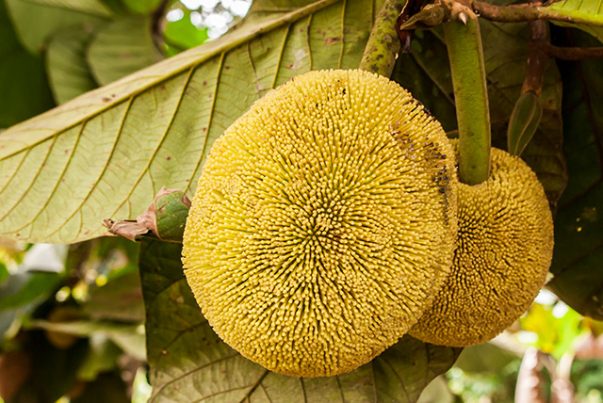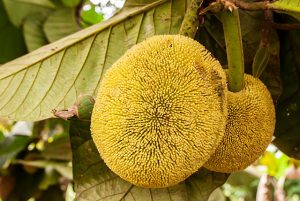
Marang – sources, health benefits, nutrients, uses and constituents at NaturalPedia.com
Saturday, July 29, 2017 by Jhoanna Robinson
http://www.naturalpedia.com/marang-sources-health-benefits-nutrients-uses-and-constituents-at-naturalpedia-com.html

Marang, which has a scientific name of Artocarpus Odoratissimus, is a tropical fruit that came from the mulberry and fig family of Moraceae and is endemic to the Borneo and the southern part of the Philippines. Its scientific name literally means “sweet odor and taste”.
The marang tree grows up to a height of 25 meters and can bear fruit for four to five years after it is planted. Its fruit weighs around a kilogram, is round to oblong in shape, and is 15 to 20 centimeters long with a 13 cm width – similar to a football. It is outwardly covered with large, spindly, and green skin and can be opened in half to reveal a yellow and white interior, which is akin to that of the jackfruit but with tinier arils, or bulb-like structures that contain the seeds, which are not edible.
Unlike other fruits like jackfruits and papaya, marang does not fall to the ground when the fruit is already ripe. A ripe marang should be eaten as soon as possible as this fruit oxidizes quite fast and quickly loses its flavor and the nutrients that one might have gleaned from it were it consumed earlier. It provides energy and is a favorite fruit of athletes, much like bananas.
Marang is also planted in Indonesia, Malaysia, and southern Thailand. It, even though it has so many similar aspects as breadfruit, cempedak, and jackfruit, cannot live in cold climates, but only between a latitude of 15 degrees north and south, and in coastal regions where temperatures never stay below seven degrees Celsius. Since marang trees are very large trees, it is advisable to ensure apt spacing – at around seven to 14 meters apart – when planting them.
Marang grows between the months of September and October, and can sometimes be cultivated in the month of December.
List of known nutrients
- Beta-Carotene
- Calcium
- Carbohydrate
- Copper
- Iron
- Manganese
- Magnesium
- Niacin
- Pantothenic Acid
- Phosphorus
- Potassium
- Protein
- Retinol
- Riboflavin
- Thiamin
- Vitamin A
- Vitamin C
- Zinc
Medicinal uses for marang
Marang has the ability to lower blood pressure and cholesterol levels, thereby also lessening the chances of incurring heart disease and stroke.
Marang can fight cancer-causing elements.
Marang is good for oral health.
Marang is good for treating anemia.
Marang enhances metabolism.
Marang has anti-inflammatory, antibacterial, and antiviral properties. It is also loaded with a lot of antioxidants that can neutralize free radicals that cause aging and certain illnesses.
Body systems supported by marang
Marang is good for the digestive system. It is good for treating irritable bowel syndrome by providing for the maintenance of regular bowel movements and preventing constipation.
Ways to use marang
Since marang is a native fruit, you might need a little help when it comes to preparing it and incorporating it to other dishes, for optimum good taste and satisfaction. Here are some recipes to look over.
Where to learn more
Summary
Marang can fight cancer-causing elements.
Marang is good for oral health.
Marang is good for treating anemia.
Marang enhances metabolism.
Marang has anti-inflammatory properties.
Marang is good for the digestive system.
Sources include:
Tagged Under: Tags: marang






